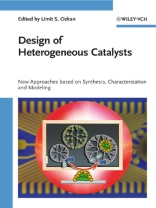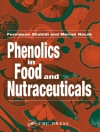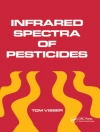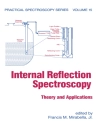This long-awaited reference source is the first book to focus on this important and hot topic. As such, it provides examples from a wide array of fields where catalyst design has been based on new insights and understanding, presenting such modern and important topics as self-assembly, nature-inspired catalysis, nano-scale architecture of surfaces and theoretical methods. With its inclusion of all the useful and powerful tools for the rational design of catalysts, this is a true ‘must have’ book for every researcher in the field.
Table of Content
USE OF OXIDE LIGANDS IN DESIGNING CATALYTIC ACTIVE SITES
Introduction
Molecular Structural Determination of Supported Metal Oxide Catalysts with In Situ Raman Spectroscopy
Characterization of Al Ox, Ti Ox, and Zr Ox Surface-Modified Si O2
Anchoring Site of Surface M1Ox species on Supported M2Ox/Si O2
Molecular Structure of Dehydrated Supported V2O5/Si O2 and V2O5/M2Ox/Si O2 Catalyst Systems
Molecular Structure of Dehydrated Supported M0O3/Si O2 and M0O3/M2Ox/Si O2 Catalyst Systems
Molecular Structure of Dehydrated Supported Re2O7/Si O2 and Re2O7/M2Ox/Si O2 Catalyst Systems
Electronic Structure of Dehydrated Supported MOx/Si O2 and M1Ox/M2Ox/Si O2 Catalysts via In Situ UV-Vis Spectroscopy
Determination of Surface Kinetic Parameters
Redox Surface Reactivity of Model Supported M1Ox/Si O2 Catalysts
Redox Surface Reactivity of Supported M1Ox/M2Ox/Si O2 Catalysts
OPTIMAL DESIGN OF HIERARCHICALLY STRUCTURED POROUS CATALYSTS
Introduction
Optimizing Mesopore Connectivity and Shape
Optimizing Catalysts by Macroscopic Distributions in Activity
Optimal Design of the Highway Network
USE OF DENDRIMERS IN CATALYST DESIGN
Introduction
Modified Dendrimer Catalysts
Indirect Effects of Dendrimer Architecture
Catalysis by Dendrimer Encapsulated Nanoparticles
Dendrimer Templated Nanocages
RATIONAL DESIGN STRATEGIES FOR INDUSTRIAL CATALYSTS
Introduction
The First Stages Toward Commercialization of a Catalyst
Catalyst Discovery to Commercialization
Example 1: Automobile Pollution Abatement Catalyst System
Example 2: Dehydrogenation of Light Alkanes
Example 3: Petroleum Refining – Fluid Catalytic Cracking
CHIRAL MODIFICATION OF CATALYTIC SURFACES
Introduction
Modification of Metal Surfaces by Cinchona Alkaloid and Related Compounds
Modification of Metal Surfaces by Tartaric Acid and Related Compounds
CATALYTIC NANOMOTORS
Introduction
The Propulsion Mechanism of Catalytic Nanomotors
Advanced Design of Catalytic Nanomotors
Applications, Challenges, and Perspectives
RATIONAL DESIGN AND HIGH-THOUGHPUT SCREENING OF METAL OPEN FRAMEWORKS FOR GAS SEPARATION ND CATALYSIS
Introduction
MOF General Features and Brief State of the Art
Combinatorial Design of MOF for CO2 Capture in a PSA Process
MOF Design for Catalytic Application
DESIGN OF BIMETALLIC CATALYSTS: FROM MODEL SURFACES TO SUPPORTED CATALYSTS
Introduction
Experimental and Theoretical Methods
Results and Discussion
SELF-ASSEMBLED MATERIALS FOR CATALYSIS
Introduction
Mesoscale Design
Designing Catalysts at the Nanoparticle Surfaces
THEORY-AIDED CATALYST DESIGN
Introduction
Catalytic Descriptors
High-Throughput Simulation and Design
Controlled-Patterning
Catalyst Synthesis and Stability
USE OF IN SITU XAS TECHNIQUES FOR CATALYSTS? CHARACTERIZATION AND DESIGN
Introduction
The X-Ray Absorption Techniques
Recent Applications of X-Ray Absorption Techniques to the Design of Heterogeneous Catalysts
Perspective
CATALYST DESIGN THROUGH DUAL TEMPLATING
Introduction
Surfactant-Assisted Self-Assembly by Mesoporous Metal Oxides
Colloidal Sphere Templating of Macroporous Metal Oxides
Dual Templating of Metal Oxides
Catalytic Applications
About the author
Umit S. Ozkan is a Professor of Chemical Engineering at the Ohio State University. Her research interests include heterogeneous catalysis and its applications to energy and environmental protection. She has edited five books, written over 150 refereed publications and has five patents.
She served as the Co-chair of the Continuing Symposia in Catalysis for the Colloids and Surface Chemistry Division (1994-2000), Secretary of the Petroleum Chemistry Division (1998-99), and as President of the Petroleum Chemistry Division (2002-03) of the ACS. She is currently the Secretary of the North American Catalysis Society and a Director of the Catalysis and Reaction Engineering Division of the American Institute of Chemical Engineers. Professor Ozkan is also on the Editorial Board of Journal of Molecular Catalysis, Catalysis Letters, Topics in Catalysis, The Royal Society of Chemistry Catalysis Book Series and Catalysis Today.












